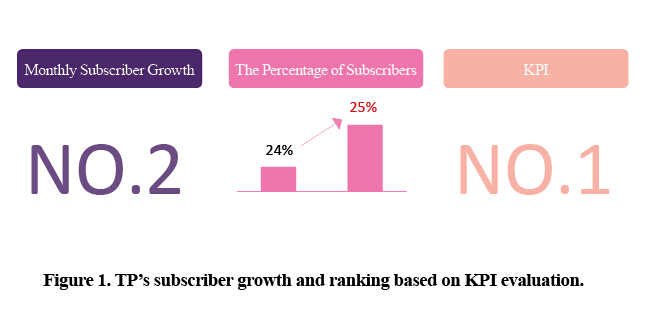Telenor Pakistan Aces Its KPIs
With 36 million subscribers and 7800 wireless base stations, Telenor Pakistan (TP) is the second largest operator in Pakistan. The biggest problems TP has faced in OAM and network development since 2005 are diesel major overhauling management, OPEX saving, and KPI improvement.
TP and ZTE signed an eight-year contract on multivendor managed services in 2012. The managed services provided by ZTE include first, second and third-line maintenance, site security, diesel management, spare parts management, and diesel generator repair for major and auxiliary network devices. ZTE has provided TP with quick, agile, professional service management, and as a result, TP has experienced the second highest monthly subscriber growth in Pakistan. The percentage of subscribers increased from 24% to 25%. In 2014, TP topped the ranking based on KPI evaluation in Pakistan (Fig. 1).

Save the OPEX on Fueling: Addressing Energy Consumption through Process Optimization and IT Tools
Various economic and social factors cause, on average, about 12 hours of power outage per day across Pakistan. In summer, this average can even exceed 17 hours per day. To ensure stable network operation, diesel generators are used, and diesel consumption accounts for a high percentage of OPEX. Diesel theft is a serious problem in poor and undeveloped areas. Some subcontractors in the local telecom market even steal diesel for profit. Energy management has therefore become a prime concern for operators in Pakistan.
ZTE has used IT tools to optimize diesel management processes and implement closed-loop control. This has fundamentally changed the way TP manages its diesel and has helped prevent diesel theft.
Strengthening Diesel Refueling Planning, Management and Review
A diesel refueling plan has been developed to suit the specific power outage cycle. To prevent diesel oversupply, more diesel is supplied when there are more power outages, and diesel supply is cut back when there are fewer power outages. This reduces the need to visit sites and frequently refuel diesel tanks. Most importantly, this makes diesel management transparent, and the root cause of diesel oversupply can be easily identified.
Optimizing Management through IT Tools
Previously, on-site diesel attendants wrote up diesel refueling reports. These reports were manually collected, processed, and reported by security subcontractors on a monthly basis. This meant that diesel refueling statistics were often outdated, and it also left room for diesel attendants and security subcontractors to fake reports. After TP's managed services were handed over to ZTE, a network operations center (NOC) was established. The NOC provides a daily report used to track diesel usage. ZTE has also developed a custom-made diesel management system that requires on-site diesel attendants to report site visit time, refueling time, and amount of diesel used for refueling. The NOC can retrieve data from the management system on a daily basis in order to track diesel usage in real time.
Managing the Whole Process of Diesel Refueling
A joint project review team includes members from TP's project team, personnel from ZTE's OAM team, and supervisors from security subcontractors. This review team periodically inspects diesel usage, transportation, refueling, and FSR signing.
One year on, PT's diesel is being well controlled. TP's monthly diesel consumption error has decreased from 11.1% to 5.5%, and monthly diesel cost has decreased 37% (Fig. 2).

Improve KPIs: Best Ever KPIs Resulting from Quick, Agile, and Professional Project Management
TP's long-standing network performance problems were caused by a few main factors. One factor was TP’s network itself, and the other factors were environmental and cultural. There are places where transportation is difficult, tribes are divided, and there is a short supply of diesel and serious security issues. Even local people are not willing to visit certain places at night. This is a big obstacle for network OAM. After taking over TP's managed services, ZTE has greatly improved network performance beyond expectations with its professional project management, quick and agile service response, and multidimensional OAM optimization.
Optimize Network Performance for Agile Response
TP and ZTE have analyzed KPIs on a monthly basis and have monthly strategy meetings. Special project rooms have been set up to enable TP project staff, security subcontractors, and front-line maintenance subcontractors to work together to quickly solve problems. Joint site visits can be arranged to address difficult problems on site.
Optimizing Subcontractor Management
Subcontractors are being more thoroughly managed so that both TP and ZTE know the subcontractor's organizational structure, internal operations, human resources, and ability to provide spare parts. This ensures that subcontractors are well stocked and prepared and can better control their resources. Site inspections are also more thorough to raise the quality awareness of subcontractors.
Solving Severe KPI Problems
Diesel generators account for more than 90% of power supply in TP's existing network, and most of these generators are severely aging. Diesel generator failure is the primary reason that TP was not previously meeting its KPIs. ZTE chose appropriate diesel generator repair subcontractors and strictly controlled repair quality. This not only ensured smooth operation of diesel generators but also paved the way for stable network operation.
Placing Strict Quality Requirements on Demo Sites
Strict quality requirements have been placed on demo sites. One or two demo sites are set up each day to improve the OAM capabilities of subcontractors.
As of August 2014, TP's network KPIs have exceeded target values for ten straight months. According to Annual Cellular Subscribers (2013), released by the Ministry of Communications of Pakistan, TP experienced the second highest monthly subscriber growth over a two-year period. TP had 35 million subscribers, a market share of 25.15%. They are second only to Mobilink, which has a market share of 29%. TP now operates the best wireless network in Pakistan and is meeting its KPIs.